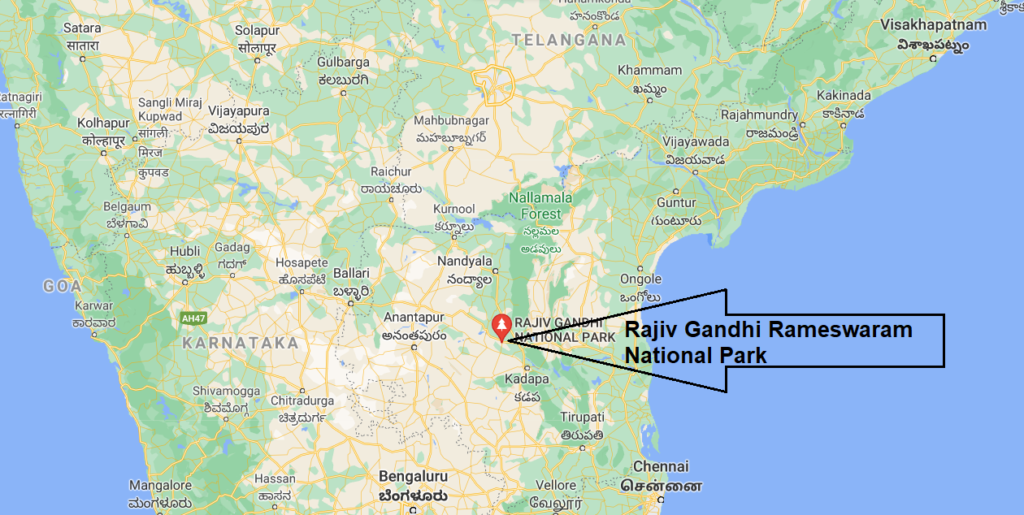
Introduction
Drifting from the sheer sandy bottom of River penna and rising into the large sand dunes as a distinct ecosystem in the heart of Prodattur town, is this National park. Rameswaram or Rajiv Gandhi National Park finds its mention in central plains of extensions hill ranges of Veligondas, Palakondas, Lankamallais, and Yerramalais in the Cuddapah district of Andhra Pradesh.
Uniqueness
A beautiful sand dune ecosystem.
Indicator Species
Burrowing snakes (Russell, earth boa, John and boa).
Forest Type
Tropical dry deciduous forest. Most of the Sanctuary is sandy.Besides, We can also find plains with Sissoo (Sesham) trees and Eucalyptus forests.
Flora
The park is bequeathed with over 25 plant species like Dalbergia sissoo, Grewia villosa, Gymnema sylvestre, etc.
Fauna
Invertebrates like Scorpions, Spiders, variety of insects like Butterflies, Grasshoppers, Crickets, etc. abound this forest. Bull frog, Common Indian toad are the species of Amphibian fauna.
Reptilian fauna includes like Russell’s earth boa, Russell’s viper, Common skink, etc.
Over 50 species of birds like Peacocks, Little egrets, Parakeets; etc are found in this forest.
Mammals like Spotted deer, Common mongoose, Black napped hare reside in this sand dune ecosystem.
Rajiv Gandhi national park in Rameswaram of Kadapa district is another national park in Andhra Pradesh to be named after the 6th prime minister of India who served from the year 1984-1989.
Rajiv Gandhi national park covers an area of about 2.39 square kilometres with the dry deciduous forest growing on sandy soil. The national park lies on the bank of the river penna on the north.
On 19 November in the year 2005, it was originally notified as the Rameswaram national park, and in the same year on 26 December; the name was changed to Rajiv Gandhi national park.
Besides, On 15th may in the year 2017, there was noticing of 500-meter eco-zone around the park .
The floral in the Rajiv Gandhi national park includes trees like Grewia villosa, Dalbergia sissoo, and Gymnema Sylvestre with a fauna at includes fifty bird species like parakeets, little egrets, and peacocks.
It is another national park that you should visit among the national parks in Andhra Pradesh. If you are an animal lover and love greenery, then indeed this place is for you.
Conclusion:
In this article, we have covered all the national parks of Andhra Pradesh. Our national parks are our pride. National parks have helped us to stay connected to nature and it is our Fundamental Duty to Protect and improve the natural environment including forests, lakes, rivers and wildlife and to have compassion for living creatures.
The peace and joy that nature brings are of another level. Therefore,We should all be thankful to nature for providing us with the basic resources that have helped us over the years to fulfill our requirements. One of the ways of thanking is by preserving nature.